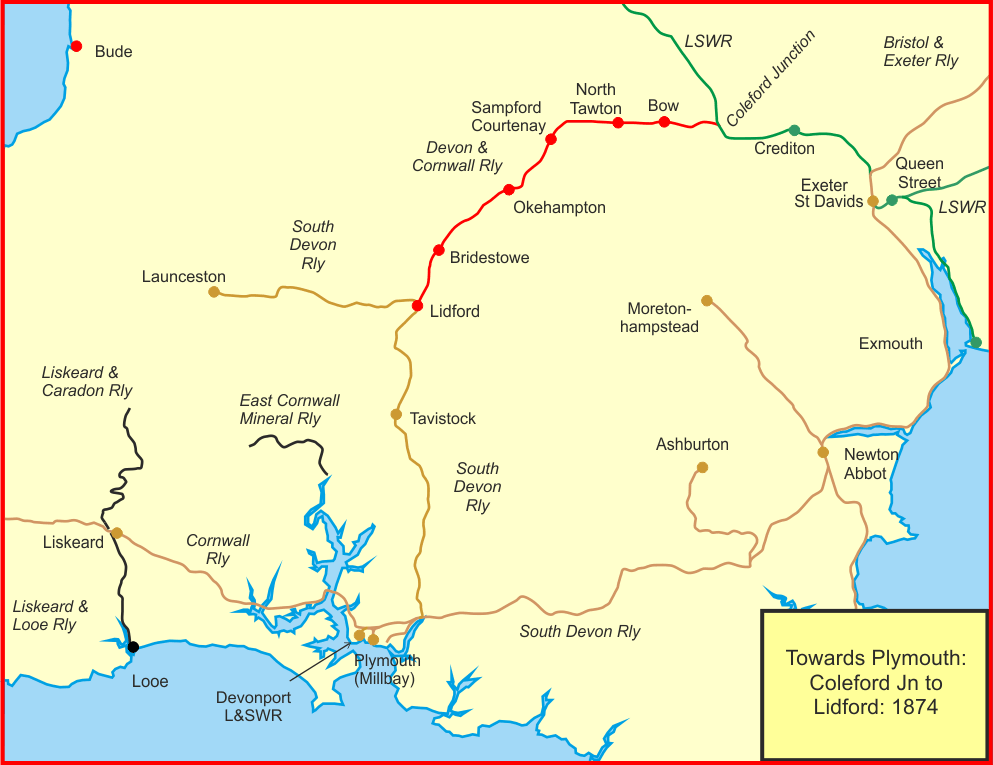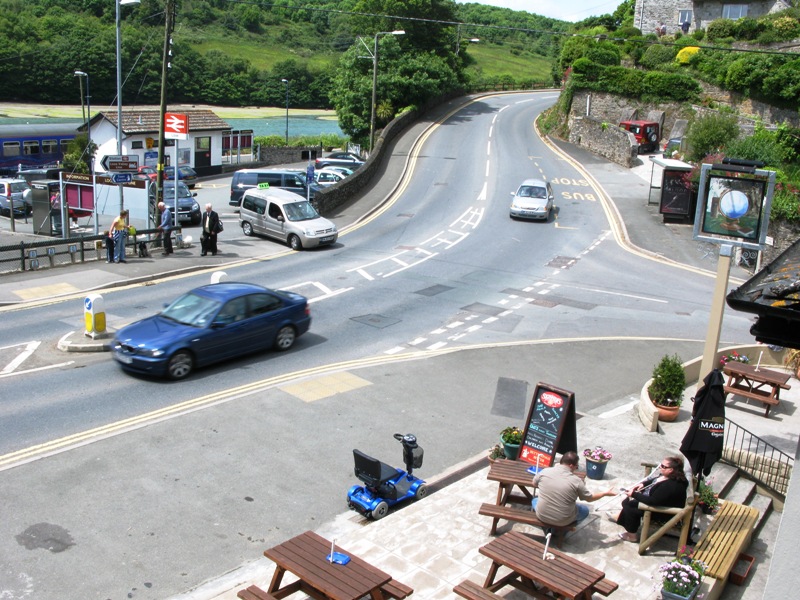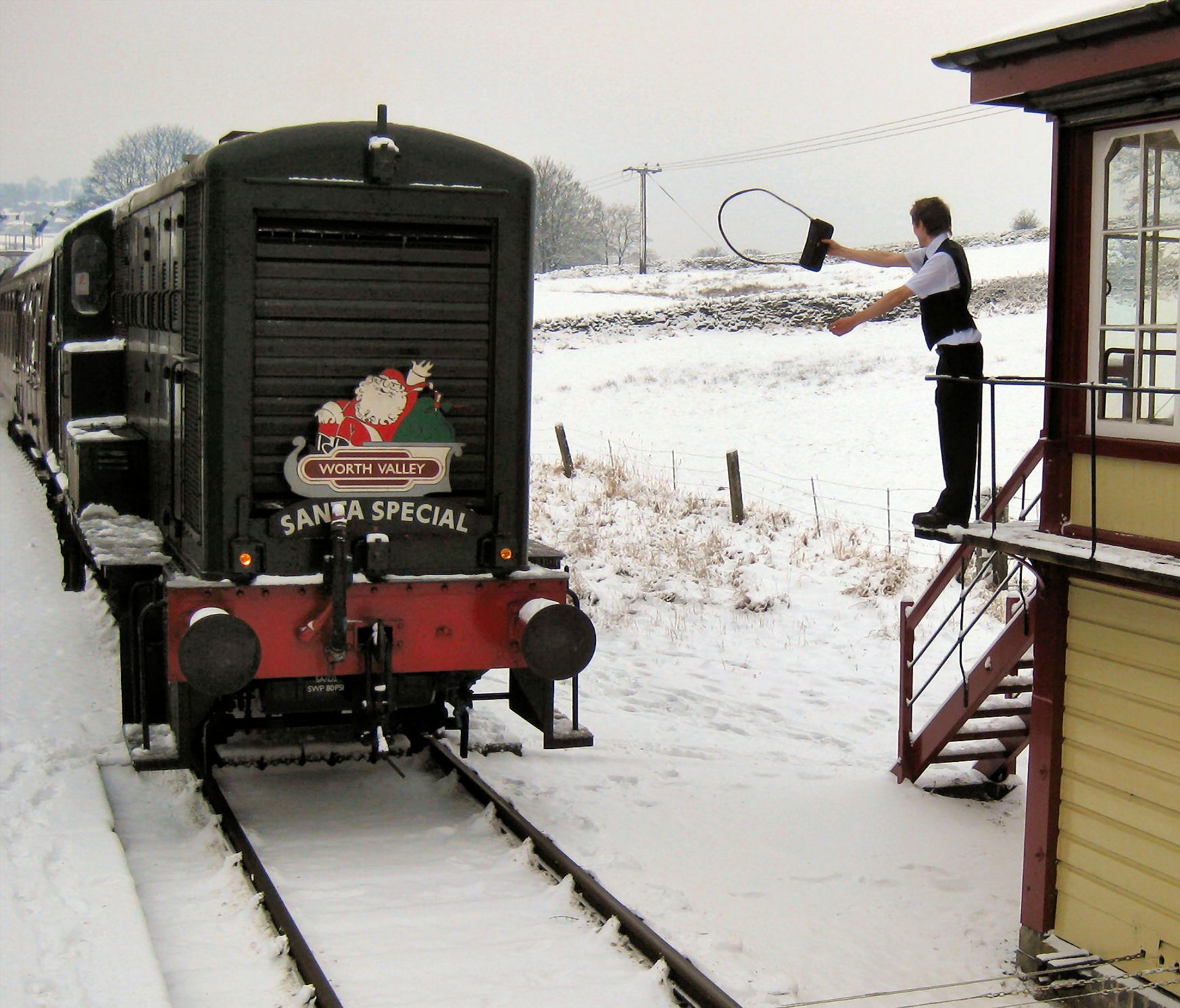|
St Budeaux Victoria Road
St Budeaux Victoria Road railway station is a suburban station in St Budeaux, Plymouth, Devon, England. The station is managed and served by Great Western Railway. History The Plymouth, Devonport and South Western Junction Railway opened its St Budeaux station on 2 June 1890 with its main line from to Devonport, which gave the London and South Western Railway a route into Plymouth that was independent of the Great Western Railway. The station was close to the road to the Saltash ferry across the River Tamar. A connection to the Great Western Railway was installed east of the station on 21 March 1941 to offer the two companies alternative routes between Plymouth and St Budeaux should either line be closed due to bombing during World War II. On 7 September 1964 the original line into Devonport was closed, and all trains use the former Great Western route and the wartime connection to reach St Budeaux, renamed St Budeaux Victoria Road to differentiate it from , opened by th ... [...More Info...] [...Related Items...] OR: [Wikipedia] [Google] [Baidu] |
Cornish Main Line
The Cornish Main Line ( kw, Penn-hyns-horn Kernow) is a railway line in Cornwall and Devon in the United Kingdom. It runs from Penzance to Plymouth, crossing from Cornwall into Devon over the famous Royal Albert Bridge at Saltash. It directly serves Truro, St Austell, Bodmin (by a Parkway station) and Liskeard. It forms the backbone for rail services in Cornwall and there are branches off it which serve St Ives, Falmouth, Newquay and Looe. The main line also carries direct trains to and from London, Birmingham, Cardiff, Manchester, the north of England and Scotland. It is the southernmost railway line in the United Kingdom and the westernmost in England. History The Cornish Main Line was originally built by two separate railway companies, the West Cornwall Railway between Truro and Penzance, opened in 1852, and the Cornwall Railway between Plymouth and a separate station in Truro, opened in 1859. The West Cornwall Railway was itself based on the Hayle Railway, opened in 18 ... [...More Info...] [...Related Items...] OR: [Wikipedia] [Google] [Baidu] |
Weston Mill Halt Railway Station
Weston Mill Halt railway station was named after a mill and quay with its lime kiln sitting on Weston Mill Lake next to the River Tamar. The small settlement of Weston Mill also lay near by and the halt was opened as part of Plymouth's suburban network development, together with other halts such as the nearby Camels Head Halt, by the London and South Western Railway in 1906, closing in 1921 or Sunday 4 May 1942. It was located on the outskirts of the city not far from the Great Western Railway main line's Weston Mill Bridge. Infrastructure As stated the halt, with the entrance on Bridewell Road, was named after a well known local mill where housing developments had taken place and although it officially opened on 1 November 1906 it may have had services from Wednesday 26 September when suburban service was launched. Some disagreement exists over its closure date that is variously recorded as being from the 27 June 1921, 14 September 1921 or even Sunday 4 May 1942. Like Came ... [...More Info...] [...Related Items...] OR: [Wikipedia] [Google] [Baidu] |
Railway Stations In Plymouth, Devon
Rail transport (also known as train transport) is a means of transport that transfers passengers and goods on wheeled vehicles running on rails, which are incorporated in tracks. In contrast to road transport, where the vehicles run on a prepared flat surface, rail vehicles (rolling stock) are directionally guided by the tracks on which they run. Tracks usually consist of steel rails, installed on sleepers (ties) set in ballast, on which the rolling stock, usually fitted with metal wheels, moves. Other variations are also possible, such as "slab track", in which the rails are fastened to a concrete foundation resting on a prepared subsurface. Rolling stock in a rail transport system generally encounters lower frictional resistance than rubber-tyred road vehicles, so passenger and freight cars (carriages and wagons) can be coupled into longer trains. The operation is carried out by a railway company, providing transport between train stations or freight customer facilit ... [...More Info...] [...Related Items...] OR: [Wikipedia] [Google] [Baidu] |
Exeter To Plymouth Railway Of The LSWR
The Exeter to Plymouth railway of the London and South Western Railway (LSWR) was the westernmost part of a route competing with that of the Great Western Railway (GWR) and its 'associated companies' from London and Exeter to Plymouth in Devon, England. Whereas the GWR route from Exeter followed the coast to Newton Abbot and then went around the southern edge of Dartmoor, the LSWR route followed the northern and western margins of Dartmoor, passing through the towns of Crediton, Okehampton, and Tavistock. The route was constructed piecemeal by independent companies, in most cases supported by the LSWR. LSWR trains first reached Plymouth in 1876 and the route took on its final form in 1891. The central part of the line closed in 1968, leaving just local services at either end. History Railways to Exeter The broad gauge Bristol and Exeter Railway (B&ER) was the first line to reach Exeter. It had reached St Davids station in Exeter in 1844 and was allied with the Great We ... [...More Info...] [...Related Items...] OR: [Wikipedia] [Google] [Baidu] |
Dartmoor Sunday Rover
The Dartmoor Sunday Rover was a Devon County Council-supported bus and rail network in Devon, England. It was withdrawn after the 2015 season. The network included buses operated by Stagecaoch Devon, Country Bus, Dartline and Target Travel. These linked places such as Exeter, Newton Abbot and Plymouth with Tavistock, Widecombe, Gunnislake, Ivybridge, Moretonhampstead and Bovey Tracey. The rail lines included were the Tamar Valley Line from to and a special Sunday service from Exeter to where it connected with the heritage Dartmoor Railway The Dartmoor line is a railway line in Devon, England. From , the line runs alongside the Tarka Line to the site of the former Coleford Junction where it diverges west to . Previously a heritage line, it is owned by Network Rail. The route .... References Transport in Devon Passenger rail transport in the United Kingdom {{England-rail-transport-stub ... [...More Info...] [...Related Items...] OR: [Wikipedia] [Google] [Baidu] |
Rail Ale Trail
A rail ale trail is a marketing exercise in the United Kingdom that is designed to promote tourism to a rural area, by encouraging people to visit a series of pubs that are close to railway station, stations along a railway line. Participants are rewarded for visiting the pubs by train. In doing this they increase the number of passengers on the railway and bring money into the local economy. The scheme is often supported by the Campaign for Real Ale. The beer is usually brewed locally and many of the pubs offer food as well. Each trail is publicised by a free booklet that is distributed through stations and local outlets, and which is also available for downloading from the internet. Each time a pub is visited the booklet is stamped, provided a valid rail ticket is shown when a purchase is made. Once sufficient stamps have been collected, the booklet can be exchanged for merchandise specific to each trail, such as a T-shirt or badge. History On 1 October 1977 the first r ... [...More Info...] [...Related Items...] OR: [Wikipedia] [Google] [Baidu] |
Devon And Cornwall Rail Partnership
The Devon and Cornwall Rail Partnership is the largest Community Rail Partnership in the United Kingdom. It was formed in 1991 to promote the use of, and improvements to, rural railways in Devon and Cornwall, and also to promote the places served in order to improve the local economy. The Partnership is based at the University of Plymouth and is backed by Devon County Council, Cornwall Council, and Plymouth City Council. Railway industry backing came initially from Wessex Trains but it withdrew in 2006 when its franchise was transferred to Great Western Railway, which had joined the Partnership the previous year. Today the Partnership is backed by Great Western Railway, CrossCountry and South Western Railway as well as the local councils. Routes There are nine branch lines promoted by the Partnership, each supported by local councils with local forums made up of representatives from the local community. * Atlantic Coast Line – Par to Newquay * Looe Valley Line &ndas ... [...More Info...] [...Related Items...] OR: [Wikipedia] [Google] [Baidu] |
Community Railway
Community rail in Britain is the support of railway lines and stations by local organisations, usually through community rail partnerships (CRPs) comprising railway operators, local councils, and other community organisations, and rail user groups (RUGs). Community railways are managed to fit local circumstances recognising the need to increase revenue, reduce costs, increase community involvement and support social and economic development. The Community Rail Network (CRN), formerly known as the Association of Community Rail Partnerships (ACoRP), supports its fifty or so member CRPs and also offers assistance to voluntary station friends groups that support their local stations through the station adoption scheme. Since 2005 the Department for Transport has formally designated a number of railway lines as community rail schemes in order to recognise the need for different, more appropriate standards than are applied to main line railway routes, and therefore make them more cost ef ... [...More Info...] [...Related Items...] OR: [Wikipedia] [Google] [Baidu] |
Channel 5 (UK)
Channel 5 is a British free-to-air public broadcast television channel launched in 1997. It is the fifth national terrestrial channel in the United Kingdom and is owned by Channel 5 Broadcasting Limited, a wholly-owned subsidiary of American media conglomerate Paramount Global, which is grouped under Paramount Networks UK & Australia division. During ownership by the RTL Group, it was branded as Five between 16 September 2002 and 13 February 2011. Richard Desmond purchased the channel from RTL on 23 July 2010, announcing plans to invest more money in programming and return to the name Channel 5 with immediate effect, and it was relaunched on 14 February 2011. On 1 May 2014 the channel was acquired by Viacom (now Paramount Global) for £450 million (US$759 million). Channel 5 is a general entertainment channel that shows both internally commissioned programmes such as '' Our Yorkshire Farm'', '' The Gadget Show'', ''The Hotel Inspector'', and ''Can't Pay? We'll Take ... [...More Info...] [...Related Items...] OR: [Wikipedia] [Google] [Baidu] |
Signalling Block System
Signalling block systems enable the safe and efficient operation of railways by preventing collisions between trains. The basic principle is that a track is broken up into a series of sections or "blocks". Only one train may occupy a block at a time, and the blocks are sized to allow a train to stop within them. That ensures that a train always has time to stop before getting dangerously close to another train on the same line. The block system is referred to in the UK as the ''method of working'', in the US as the ''method of operation'', and in Australia as ''safeworking''. In most situations, a system of signals is used to control the passage of trains between the blocks. When a train enters a block, signals at both ends change to indicate that the block is occupied, typically using red lamps or indicator flags. When a train first enters a block, the rear of the same train has not yet left the previous block, so both blocks are marked as occupied. That ensures there is slight ... [...More Info...] [...Related Items...] OR: [Wikipedia] [Google] [Baidu] |
Token (railway Signalling)
In railway signalling, a token is a physical object which a train driver is required to have or see before entering onto a particular section of single track. The token is clearly endorsed with the names of the section it belongs to. A token system is more commonly used for single lines because of the greater risk of collision in the event of a mistake being made by a signaller or traincrew, than on double lines. Principle The operation of a bidirectional single track line has the hazard of two trains colliding. The simplest way to prevent such collisions is to have only one train in the section at any given time. Such a system is known as "one-engine-in-steam” (OES) or “one-train working" (OTW). This system is used on some branches of rail networks, and on heritage railways. The main disadvantage is that it restricts the number of train movements that can be made. For a larger railway system, it becomes exceptionally limiting in the level of operations that it allows, wi ... [...More Info...] [...Related Items...] OR: [Wikipedia] [Google] [Baidu] |
St Budeaux Ferry Road Railway Station
St Budeaux Ferry Road railway station is a suburban station in St Budeaux, Plymouth, England. It is from via Box and Plymouth Millbay. It is served by Great Western Railway services during the rush hours and late morning/early afternoon only. The vast majority of services pass through non-stop due to the proximity of : the entrances to the two stations are directly opposite each other. To the west, the line singles and crosses into Cornwall on the Royal Albert Bridge. The station is unstaffed with step-free access to both platforms. History The station was opened by the Great Western Railway on 1 June 1904 as St Budeaux Platform, and was later renamed St Budeaux Ferry Road to avoid confusion with the London and South Western Railway station. The reason for the separate stations is due to the two railways taking different routes into the city. A junction was laid between the two lines during World War II and the London and South Western Railway line between Victoria Road a ... [...More Info...] [...Related Items...] OR: [Wikipedia] [Google] [Baidu] |






